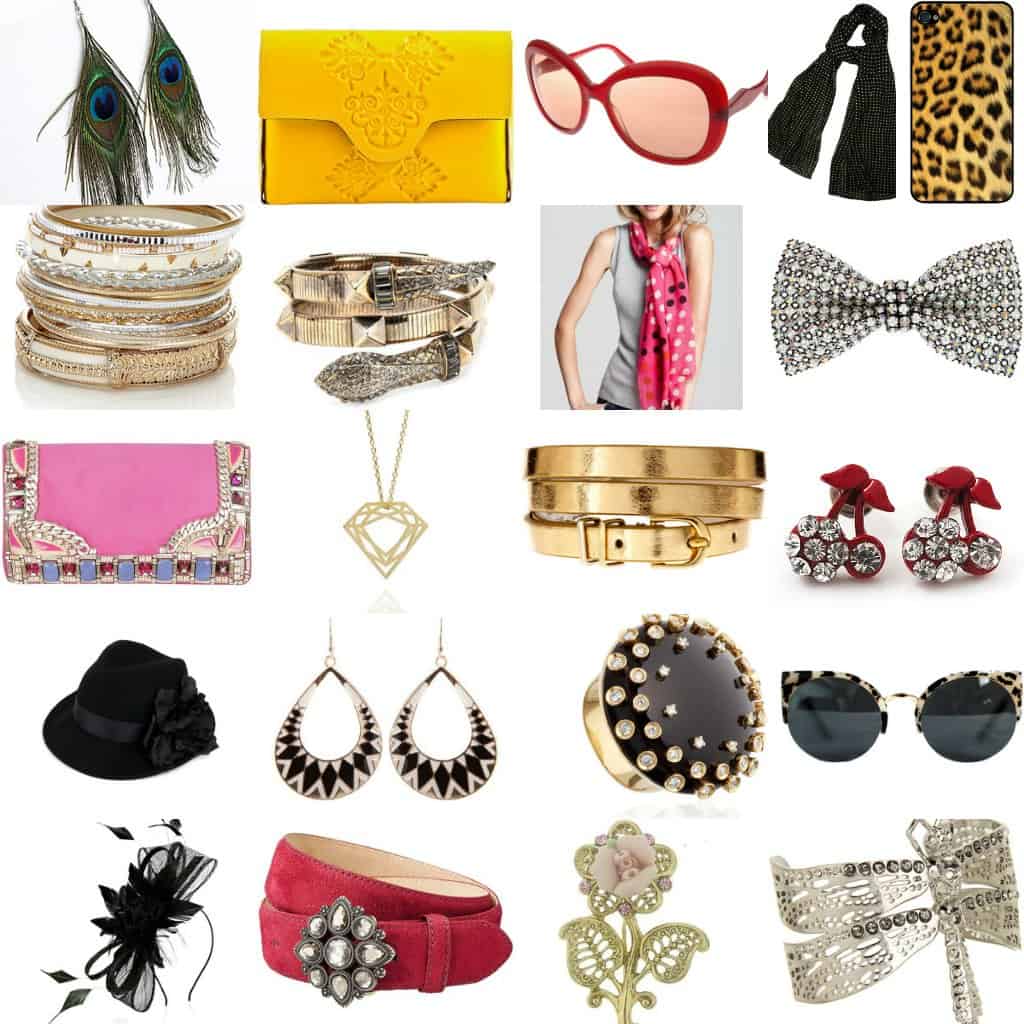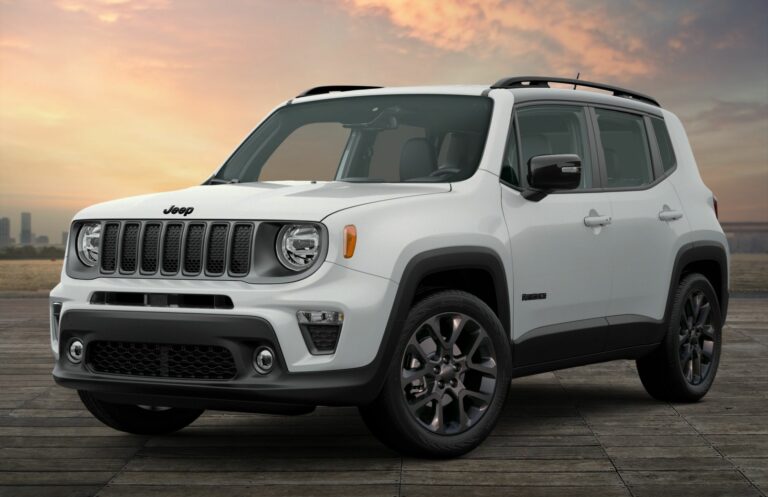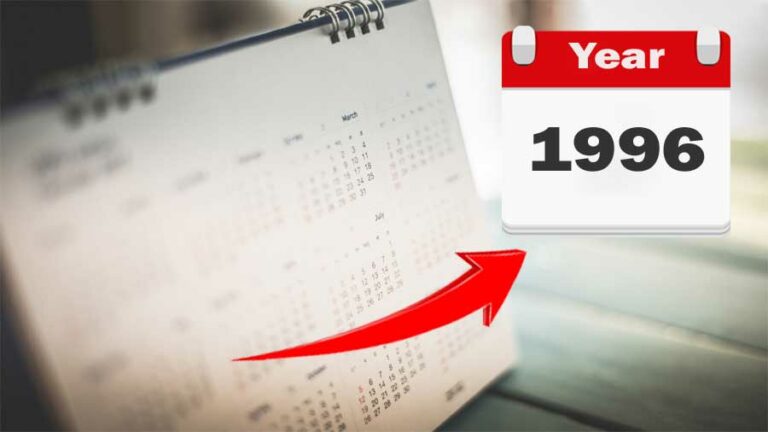Accessories For Wrangler Jeep: Unlocking Your Ultimate Adventure Machine
Accessories For Wrangler Jeep: Unlocking Your Ultimate Adventure Machine jeeps.truckstrend.com
The Jeep Wrangler is more than just a vehicle; it’s a lifestyle, a statement, and a canvas for adventure. Born from military roots, its iconic design and unparalleled off-road prowess have captivated enthusiasts for decades. But what truly sets a Wrangler apart, transforming it from a capable SUV into a personalized adventure machine, are its accessories. Far from mere add-ons, these enhancements optimize performance, elevate comfort, boost utility, and inject a unique personality into your ride.
This comprehensive guide will delve into the vast world of Wrangler accessories, providing insights, practical advice, and actionable information to help you navigate your customization journey. Whether you’re aiming to conquer extreme trails, enhance daily driving comfort, or simply make your Jeep stand out from the crowd, understanding the right accessories is the first step towards building your ultimate Wrangler.
Accessories For Wrangler Jeep: Unlocking Your Ultimate Adventure Machine
I. Enhancing Off-Road Capability: Conquer Any Terrain
For many Wrangler owners, the primary goal is to push the boundaries of off-road exploration. These accessories are designed to boost your vehicle’s resilience, traction, and ability to navigate challenging landscapes.
A. Lift Kits: Gaining Clearance and Stature
A lift kit is often the first significant modification for serious off-roaders. It increases the vehicle’s ground clearance and allows for the installation of larger tires, both crucial for tackling obstacles.
- Types:
- Budget Boost/Spacer Lifts: Inexpensive, easy to install, use spacers to raise the body. Good for mild lifts (1-2 inches) and larger tires without major suspension changes.
- Coil Spring Lifts: Replace factory coil springs with longer ones, offering 2-4 inches of lift. Improves articulation and ride quality over spacers.
- Short Arm/Long Arm Kits: More comprehensive systems that replace control arms, springs, and shocks. Short arm kits are good for 3-4 inches; long arm kits are for extreme lifts (4+ inches), offering superior articulation and stability but requiring significant modification.

- Benefits: Increased ground clearance, improved approach/departure/breakover angles, ability to fit larger tires, enhanced aesthetics.
- Considerations: Can affect ride quality, require re-calibration of speedometer, may necessitate driveline modifications (e.g., driveshafts, slip yoke eliminator) for taller lifts, potential impact on warranty.
- Tips: Research reputable brands. Consider your primary use (daily driver vs. dedicated off-roader). Don’t go too tall if you’re new to lifted vehicles.

B. Tires & Wheels: Your Connection to the Trail
The right set of tires and wheels is paramount for off-road performance and safety.

- Tire Types:
- All-Terrain (A/T): Good balance for on-road comfort and off-road traction. Versatile for various conditions.
- Mud-Terrain (M/T): Aggressive tread for maximum grip in mud, rocks, and loose terrain. Noisier on pavement and quicker wear.
- Hybrid Terrain (R/T): A blend, offering better on-road manners than M/T but more aggressive than A/T.
- Wheels:
- Steel Wheels: Durable, affordable, but heavy.
- Alloy Wheels: Lighter, better heat dissipation, but more prone to cracking.
- Beadlock Wheels: Secure tire to rim at low pressures, essential for extreme rock crawling, but not street legal in all areas.
- Benefits: Enhanced traction, improved durability, better flotation in soft terrain, unique aesthetics.
- Considerations: Tire size must match lift and fender clearance. Larger tires impact fuel economy, braking, and speedometer accuracy. Wheel backspacing is crucial for clearance.
- Tips: Don’t skimp on tires. Rotate regularly. Check tire pressure frequently, especially when airing down for trails.
C. Winches & Recovery Gear: The Ultimate Self-Rescue Tool
A winch is an indispensable tool for any serious off-roader, offering the ability to extract your vehicle or others from sticky situations.
- Winches: Electric winches are most common, powered by the vehicle’s battery. Look for a pulling capacity of at least 1.5 times your vehicle’s gross weight.
- Recovery Gear: Includes snatch straps, tree saver straps, D-rings (shackles), snatch blocks, and recovery boards (e.g., Maxtrax).
- Benefits: Self-recovery, assisting others, obstacle removal.
- Considerations: Proper mounting (winch-ready bumper), battery health, understanding safe winching techniques.
- Tips: Always carry recovery gear. Get formal training on winch operation. Never winch alone.
D. Aftermarket Bumpers & Armor: Protection and Utility
Stock bumpers offer minimal protection off-road. Aftermarket options significantly enhance durability and functionality.
- Bumpers (Front & Rear):
- Steel vs. Aluminum: Steel is heavier and stronger; aluminum is lighter and more corrosion-resistant.
- Features: Winch mounts, D-ring mounts, fog light cutouts, tire carriers (rear), rock-crawler design (high clearance).
- Skid Plates: Protect vital underbody components (oil pan, transfer case, fuel tank) from impacts.
- Benefits: Superior protection from trail hazards, increased approach/departure angles, mounting points for lights/winches/tires.
- Considerations: Added weight, potential impact on approach/departure angles if not designed correctly.
- Tips: Choose bumpers that match your off-roading style. Ensure proper fitment and robust mounting.
II. Exterior Protection & Utility: Durability and Versatility
Beyond direct off-road performance, exterior accessories protect your Wrangler’s body and expand its cargo-carrying capabilities.
A. Fenders & Flares: Tire Coverage and Protection
Original fenders can be prone to damage off-road, and larger tires often require more coverage.
- Types: Flat fenders (high clearance), tube fenders, wider flares.
- Benefits: Increased tire clearance for larger tires, protection from mud/debris, enhanced rugged look.
- Considerations: Material (steel, aluminum, plastic), legality (tire coverage laws vary by state).
- Tips: Check local laws regarding tire exposure.
B. Rock Sliders & Side Steps: Side Protection and Entry Aid
These serve a dual purpose: protecting your rocker panels from rocks and providing a convenient step into the lifted vehicle.
- Types: Frame-mounted (strongest, best protection), body-mounted (easier install, less protection).
- Benefits: Prevents body damage, aids entry/exit, can act as a pivot point on trails.
- Considerations: Weight, ground clearance impact.
- Tips: Opt for frame-mounted sliders if serious off-roading is planned.
C. Roof Racks & Cargo Solutions: Expanding Hauling Capacity
Wranglers, especially 2-doors, have limited interior cargo space. Roof racks and cargo solutions are essential for extended trips.
- Types: Gutter-mounted, hardtop-mounted, external cage racks.
- Cargo Solutions: Cargo baskets, storage bags, MOLLE panels for exterior mounting.
- Benefits: Carry extra gear (tents, kayaks, fuel cans), free up interior space.
- Considerations: Weight capacity, wind noise, fuel economy impact, clearance issues.
- Tips: Distribute weight evenly. Secure all cargo properly.
D. Auxiliary Lighting: Illuminating the Path
Whether for night trails or improved visibility, auxiliary lights are a popular and practical upgrade.
- Types: LED light bars (various sizes), spot/flood/combo beams, cube lights, rock lights.
- Mounting: Bumper, windshield frame, A-pillar, roof.
- Benefits: Enhanced visibility off-road, improved safety, cool aesthetic.
- Considerations: Wiring complexity, legality (check local laws for on-road use), glare.
- Tips: Choose appropriate beam patterns for your needs. Wire with a separate switch and fuse.
III. Interior Comfort, Organization & Tech: Your Mobile Command Center
While the Wrangler is rugged, its interior can be significantly upgraded for comfort, organization, and technological integration.
A. Seat Covers & Floor Mats: Protection and Durability
Protecting your interior from mud, spills, and wear is crucial.
- Seat Covers: Neoprene (water-resistant), ballistic nylon (heavy-duty), leatherette.
- Floor Mats: All-weather rubber mats with deep channels for containing dirt and water.
- Benefits: Protects original upholstery, easy to clean, adds a personalized touch.
- Considerations: Fitment (model-specific), material durability.
- Tips: Invest in high-quality, custom-fit mats and covers for the best protection.
B. Storage Solutions: Keeping Gear Organized
Maximize the limited interior space with clever storage solutions.
- Types: Under-seat storage bins, cargo nets, MOLLE panels (for seatbacks/tailgate), secure cargo drawers.
- Benefits: Prevents gear from shifting, keeps essentials accessible, enhances security.
- Considerations: Accessibility, impact on passenger space.
- Tips: Assess what gear you carry regularly and choose solutions accordingly.
C. Dash Mounts & Device Holders: Stay Connected and Navigated
Mounting solutions keep your phone, GPS, and other devices secure and visible.
- Types: Dash-mounted rails, vent mounts, suction cup mounts.
- Benefits: Hands-free navigation, easy access to communication, secure device storage.
- Considerations: Vibrations, visibility obstruction.
- Tips: Choose sturdy, vibration-dampening mounts.
IV. Practical & Safety Gear: Prepared for Anything
Beyond vehicle modifications, carrying essential safety and recovery gear is paramount for any Wrangler owner, especially those venturing off-road.
- First Aid & Survival Kits: Comprehensive kits for medical emergencies, fire starters, signaling devices.
- Fire Extinguisher: Essential for engine fires or brush fires on trails.
- Trail Jacks & Tools: Hi-Lift jack (for lifting lifted vehicles), basic tool kit, tire repair kit.
- Portable Air Compressor: For airing up tires after airing down for trails.
- Benefits: Ensures safety, allows for minor repairs, prepares you for unexpected situations.
- Tips: Regularly check and restock kits. Learn how to use all your safety gear before you need it.
Practical Advice and Actionable Insights
- Define Your Purpose: Before buying anything, ask yourself: What do I primarily use my Wrangler for? Daily commute, weekend camping, extreme rock crawling? Your answer will guide your accessory choices.
- Budget Wisely: Accessories can add up quickly. Prioritize what you need most for safety and your primary use case. Consider a phased approach, buying essentials first and adding others later.
- Research, Research, Research: Not all accessories are created equal. Read reviews, watch installation videos, and check compatibility with your specific Wrangler model (JL, JK, TJ, YJ, etc.) and year. Forums and enthusiast groups are excellent resources.
- DIY vs. Professional Installation: Many accessories (like floor mats, grab handles, simple light bars) are easy DIY projects. Larger items like lift kits, bumpers, or extensive wiring may require professional installation, especially if you lack experience or specialized tools. Improper installation can lead to safety issues or damage.
- Understand Legality: Some modifications, particularly lift kits and lighting, are subject to local and state laws. Research these regulations to ensure your Jeep remains street legal.
- Quality Over Price: While tempting to go for the cheapest option, investing in high-quality, reputable brands often pays off in durability, performance, and peace of mind. Cheap accessories can fail, causing more problems and costing more in the long run.
- Consider Weight: Adding heavy accessories (steel bumpers, roof racks, larger tires) increases your Wrangler’s curb weight, which can impact fuel economy, braking performance, and suspension wear.
Accessories For Wrangler Jeep: Estimated Price Table
Please note: Prices are highly variable and depend on the brand, quality, specific model compatibility, and installation costs. These are general estimates for common accessories.
| Accessory Type | Description/Purpose | Estimated Price Range (USD) |
|---|---|---|
| Performance & Off-Road | ||
| Lift Kit (2-3 inch spacer) | Mild lift for larger tires, basic | $200 – $600 |
| Lift Kit (2.5-3.5 inch coil) | Moderate lift, improved ride/articulation | $800 – $2,500 |
| Lift Kit (4+ inch long arm) | Extreme lift, maximum articulation, complex | $3,000 – $8,000+ |
| All-Terrain Tires (set of 5) | Good balance for on/off-road (33-35 inch) | $1,200 – $2,500 |
| Mud-Terrain Tires (set of 5) | Aggressive off-road performance (33-37 inch) | $1,500 – $3,000+ |
| Aftermarket Wheels (set of 5) | Steel or Alloy, various designs | $600 – $1,500+ |
| Front Bumper (Winch-ready) | Steel, enhanced protection, winch mount | $500 – $1,500 |
| Rear Bumper (Tire Carrier) | Steel, protection, swing-out tire mount | $700 – $2,000 |
| Electric Winch (8k-12k lbs) | Self-recovery tool for stuck situations | $400 – $1,500 |
| Rock Sliders (Frame-mount) | Protects rocker panels from trail damage | $300 – $1,000 |
| Exterior & Utility | ||
| Flat Fenders (set of 4) | Increased tire clearance, rugged look | $300 – $1,000 |
| LED Light Bar (20-50 inch) | Auxiliary lighting for off-road visibility | $100 – $600 |
| Auxiliary Cube Lights (pair) | Spot/flood lights for specific areas (A-pillar) | $50 – $300 |
| Roof Rack (full-size) | Adds significant cargo carrying capacity | $400 – $1,500 |
| Interior & Comfort | ||
| Custom Seat Covers (front & rear) | Protects upholstery, adds style | $150 – $600 |
| All-Weather Floor Mats (full set) | Heavy-duty protection from dirt/water | $100 – $250 |
| Grab Handles (front & rear) | Aids entry/exit, passenger stability | $30 – $100 |
| Under-Seat Storage Bin | Secure, hidden storage | $50 – $150 |
| Dash Mount for Devices | Securely holds phone/GPS on dashboard | $20 – $100 |
| Practical & Safety | ||
| Recovery Strap/Kit | Snatch strap, D-rings, tree saver | $50 – $200 |
| Hi-Lift Jack | Manual lifting jack for off-road recovery | $80 – $200 |
| Portable Air Compressor | Re-inflates tires after airing down for trails | $100 – $400 |
Frequently Asked Questions (FAQ)
Q1: What’s the first accessory I should buy for my new Wrangler?
A1: It depends on your primary use. For daily driving and light trails, all-weather floor mats and good seat covers are practical. If you plan to go off-road, invest in quality recovery gear (straps, D-rings) and a portable air compressor. These are essential safety items regardless of other modifications.
Q2: Do accessories void my Jeep’s warranty?
A2: Generally, no. Under the Magnuson-Moss Warranty Act, a dealership cannot void your entire warranty just because you’ve installed aftermarket parts. However, if an aftermarket part causes a failure, the repair of that specific failure might not be covered under warranty. For example, a lift kit won’t void your engine warranty, but if it causes a driveshaft to fail, that driveshaft repair might not be covered. Always check with your dealership for specifics.
Q3: How much does it typically cost to lift a Jeep Wrangler?
A3: The cost varies significantly. A basic spacer lift can be a few hundred dollars for parts, while a comprehensive long-arm suspension system can cost $3,000 to $8,000 or more for parts alone, not including installation. Professional installation can add another $500 to $2,000+. Don’t forget the cost of larger tires and wheels, which are often necessary after a lift.
Q4: Can I install all accessories myself?
A4: Many accessories are designed for DIY installation and come with detailed instructions (e.g., floor mats, grab handles, simple light bars, fender flares). However, complex installations like lift kits, bumpers with winches, or extensive electrical wiring often require specialized tools, experience, and knowledge. If unsure, it’s always best to consult a professional to ensure safety and proper function.
Q5: Are all accessories compatible with all Wrangler models (e.g., JL, JK, TJ)?
A5: No, compatibility is crucial. Accessories are often designed for specific Wrangler generations (e.g., JL for 2018+, JK for 2007-2018, TJ for 1997-2006, YJ for 1987-1995, CJ for older models). Always double-check the product description and fitment guide before purchasing.
Q6: What’s the most important off-road accessory?
A6: While a lift and bigger tires are popular, the most important off-road accessory is often considered to be a good set of tires matched to the terrain you’ll encounter, followed closely by recovery gear (winch, straps, D-rings). Traction and the ability to self-recover are fundamental to safe off-roading.
Conclusion
The world of Jeep Wrangler accessories is as vast and adventurous as the trails themselves. From enhancing raw off-road capability with robust lift kits and aggressive tires to improving interior comfort and organization for daily commutes, each accessory offers a unique opportunity to tailor your Wrangler to your specific needs and desires.
Remember that customizing your Jeep is a journey, not a destination. Start with the essentials, prioritize quality, research thoroughly, and always consider safety. With the right accessories, your Jeep Wrangler won’t just be a vehicle; it will be a true extension of your adventurous spirit, ready to conquer any challenge and take you wherever your heart desires. Your Jeep, your adventure – built exactly the way you want it.





